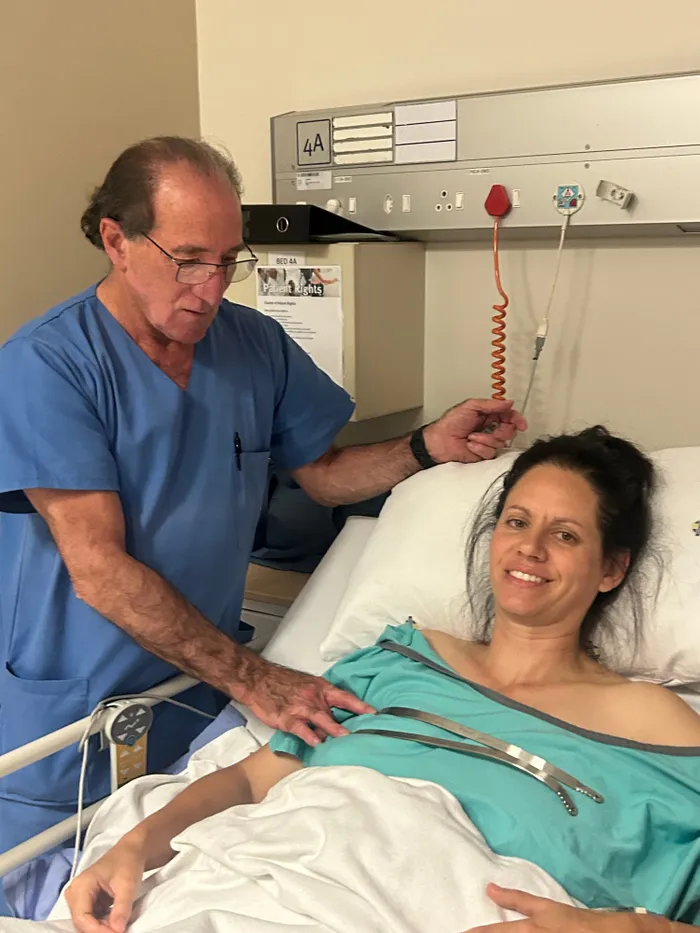Groundbreaking operation to correct sunken chest, deeply dented breastbone for mother of three

Ingrid Dammann recovering in hospital, with Dr Ivan Schewitz by her side. Picture: Supplied
Pretoria - It was only at the age of 31, while pregnant with her first baby, that Ingrid Dammann’s ever-present health-care condition – a sunken chest with a deeply dented breastbone – was finally identified as a serious concern requiring medical intervention.
Until that moment, her “constant, elusive companion since birth” was viewed as little more than a cosmetic problem – at worst, an irregular heart rate, a small hiatal hernia or simply acid reflux.
Six years and two pregnancies later, Dammann recalls that even though pectus excavatum, as it was later diagnosed, is the most common chest wall skeletal deformity, it was never something that any doctor had previously paid much attention to or even referred to by name.
Dammann, who lives in Glencoe in KwaZulu-Natal with her husband and three children, spent the last month of her first pregnancy on bed rest before her baby was born by caesarean section at 36 weeks.
“Prior to being confined to my bed, I could not drive myself to work without having to pull over due to dizziness and breathlessness. As an occupational therapist, the active therapy sessions that I had with physically and mentally impaired children caused the muscles in my upper and lower extremities to become completely stiff, leaving me gasping for air while fighting headedness.”
She said for the first time, the specialists she was consulting took her complaints seriously, but they still could not find clear answers to her problem.
While scouring the internet for a solution, she found an electrophysiologist and a cardiothoracic surgeon, and she subsequently had a cardiac ablation to treat her abnormal heart rhythm.
Her problems were, however, not behind her as the root cause of her condition had not been resolved. After ongoing research and reaching out to countless specialists, she finally received a positive response from cardiothoracic surgeon Dr Ivan Schewitz, a pioneer in his field.
But just after being scheduled for the operation, called the Nuss procedure, she found out that she was pregnant with her second child. She, however, decided to go ahead with the operation.
Schewitz explained that during the Nuss procedure, two small incisions are made on the side of the chest so that a stainless steel bar can be inserted behind the deformed breastbone from where it is attached to the outer edge of the ribs.
“A growing interest in the benefits of the minimally invasive Nuss procedure has helped us to realise that the condition is so much more than cosmetic,” he said.
He explained that not only does pectus excavatum cause the chest to have a distinctive and unusual inverted appearance, but it tends to displace the heart to the left of the chest cavity, thereby compressing its right ventricle. It also results in restricted movement of the chest wall.
Typical symptoms may include shortness of breath, fatigue, chest pain, a rapid heartbeat or heart palpitations, frequent respiratory infections, coughing or wheezing, as well as the psychological effects.
Following the procedure, Dammann experienced uncomplicated pregnancies, giving birth to two healthy children with the Nuss bars in place.
Pretoria News